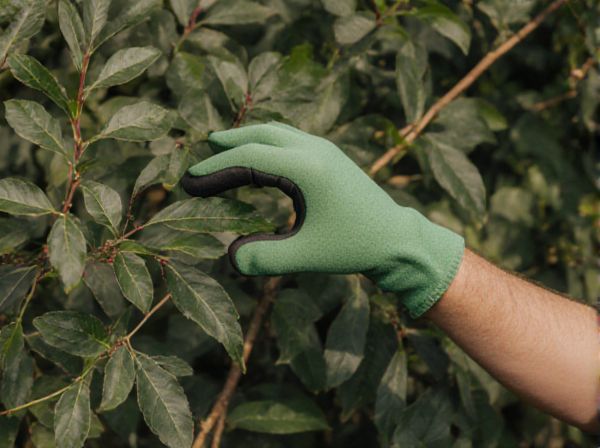
Deciduous vs Evergreen Illustration
Deciduous plants shed their leaves seasonally, creating vibrant displays of color in autumn and allowing energy conservation during dormancy. Evergreen plants retain their foliage year-round, providing consistent greenery and structure to landscapes even in winter. Choosing between deciduous and evergreen depends on desired aesthetic and functional outcomes in garden design.
Table of Comparison
| Feature | Deciduous | Evergreen |
|---|---|---|
| Leaf Retention | Sheds leaves seasonally, typically in autumn | Retains leaves year-round |
| Appearance | Changes color and texture with seasons | Maintains consistent green foliage |
| Growth Cycle | Dormant in winter, active in spring/summer | Continuous growth throughout the year |
| Maintenance | Requires seasonal pruning and leaf cleanup | Lower maintenance, minimal leaf drop |
| Climate Adaptation | Adapted to temperate climates with cold winters | Suited for diverse climates, including tropical and cold |
| Ornamental Value | Seasonal color changes enhance landscape aesthetics | Consistent greenery provides year-round visual interest |
Understanding Deciduous and Evergreen Plants
Deciduous plants shed their leaves annually, conserving energy during colder or drier seasons, and typically produce vibrant fall foliage. Evergreen plants retain their leaves year-round, maintaining consistent photosynthesis and providing continuous greenery in landscapes. Understanding these differences is crucial for selecting ornamental plants that fit seasonal aesthetics and environmental conditions.
Key Differences Between Deciduous and Evergreen
Deciduous plants shed their leaves annually, typically in autumn, allowing them to conserve water during dry or cold seasons, whereas evergreen plants retain their foliage year-round, maintaining photosynthesis continuously. Deciduous species generally have broader leaves adapted for maximum light absorption during the growing season, while evergreens possess needle-like or scaled leaves with waxy coatings, reducing water loss. The growth cycles and environmental adaptability of deciduous versus evergreen plants distinctly influence landscaping choices in ornamental horticulture based on climate and aesthetic preferences.
Seasonal Changes: What to Expect
Deciduous plants undergo dramatic seasonal changes, shedding leaves in autumn to conserve energy during winter dormancy. Evergreen varieties maintain their foliage year-round, providing consistent color and structure through all seasons. Understanding these patterns helps in selecting ornamental plants that suit landscaping needs and aesthetic preferences throughout the changing seasons.
Choosing the Right Type for Your Garden
Deciduous plants offer seasonal interest with vibrant fall colors and provide shade in summer while allowing sunlight in winter, making them ideal for gardens that benefit from seasonal changes. Evergreen plants maintain year-round foliage, offering consistent privacy, structure, and color even during winter months. Choosing the right type depends on garden aesthetics, climate, and maintenance preferences, with deciduous trees like maples or oaks suited for dynamic landscapes, and evergreens such as pines or hollies favored for enduring greenery.
Benefits of Deciduous Ornamental Plants
Deciduous ornamental plants enrich landscapes with vibrant seasonal color changes, enhancing visual interest throughout spring, summer, and fall. Their leaf drop in winter allows for greater sunlight penetration, benefiting undergrowth and reducing heating costs for nearby structures. These plants also support diverse wildlife by providing seasonal food sources and habitats.
Advantages of Evergreen Ornamental Species
Evergreen ornamental species offer year-round foliage, providing continuous aesthetic appeal and consistent privacy screening in landscapes. These plants contribute to energy efficiency by acting as windbreaks, reducing heating costs during colder months. Evergreen species also support winter wildlife habitats, maintaining ecosystem balance throughout the year.
Popular Deciduous Plants for Ornamental Gardens
Popular deciduous plants for ornamental gardens include maples, dogwoods, and flowering cherries, prized for their vibrant seasonal foliage and striking blooms. These plants offer dynamic visual interest with dramatic changes in leaf color during autumn and nurturing habitat for local wildlife. Their adaptability to various soil types and climates makes them ideal for diverse landscape designs, enhancing curb appeal year-round with distinct seasonal character.
Top Evergreen Varieties for Landscape Design
Top evergreen varieties for landscape design include Eastern White Pine (Pinus strobus), known for its soft blue-green needles and fast growth, and Boxwood (Buxus sempervirens), prized for its dense, glossy foliage and versatility in shaping. Holly (Ilex spp.) offers attractive red berries and spiny leaves, making it a popular choice for adding color and texture year-round. Japanese Yew (Taxus cuspidata) stands out with its dark green needles and tolerance for shade, providing a low-maintenance option for diverse landscape applications.
Maintenance Tips for Deciduous and Evergreen Plants
Deciduous plants require seasonal pruning and leaf cleanup to maintain health and aesthetics, especially in autumn when they shed leaves. Evergreen plants benefit from regular watering during dry periods and occasional trimming to remove dead or diseased foliage, ensuring year-round vibrancy. Proper mulching around both types helps retain soil moisture and reduce weed growth, enhancing overall plant maintenance.
Combining Deciduous and Evergreen for Year-Round Beauty
Combining deciduous and evergreen plants in ornamental landscapes ensures vibrant seasonal changes alongside consistent green structure, enhancing year-round aesthetic appeal. Deciduous trees offer striking autumn colors and spring blossoms, while evergreen shrubs provide continuous foliage, maintaining garden interest during winter months. Strategically integrating both plant types optimizes visual texture, depth, and seasonal dynamics in ornamental design.
Deciduous vs Evergreen Infographic

 gardendif.com
gardendif.com